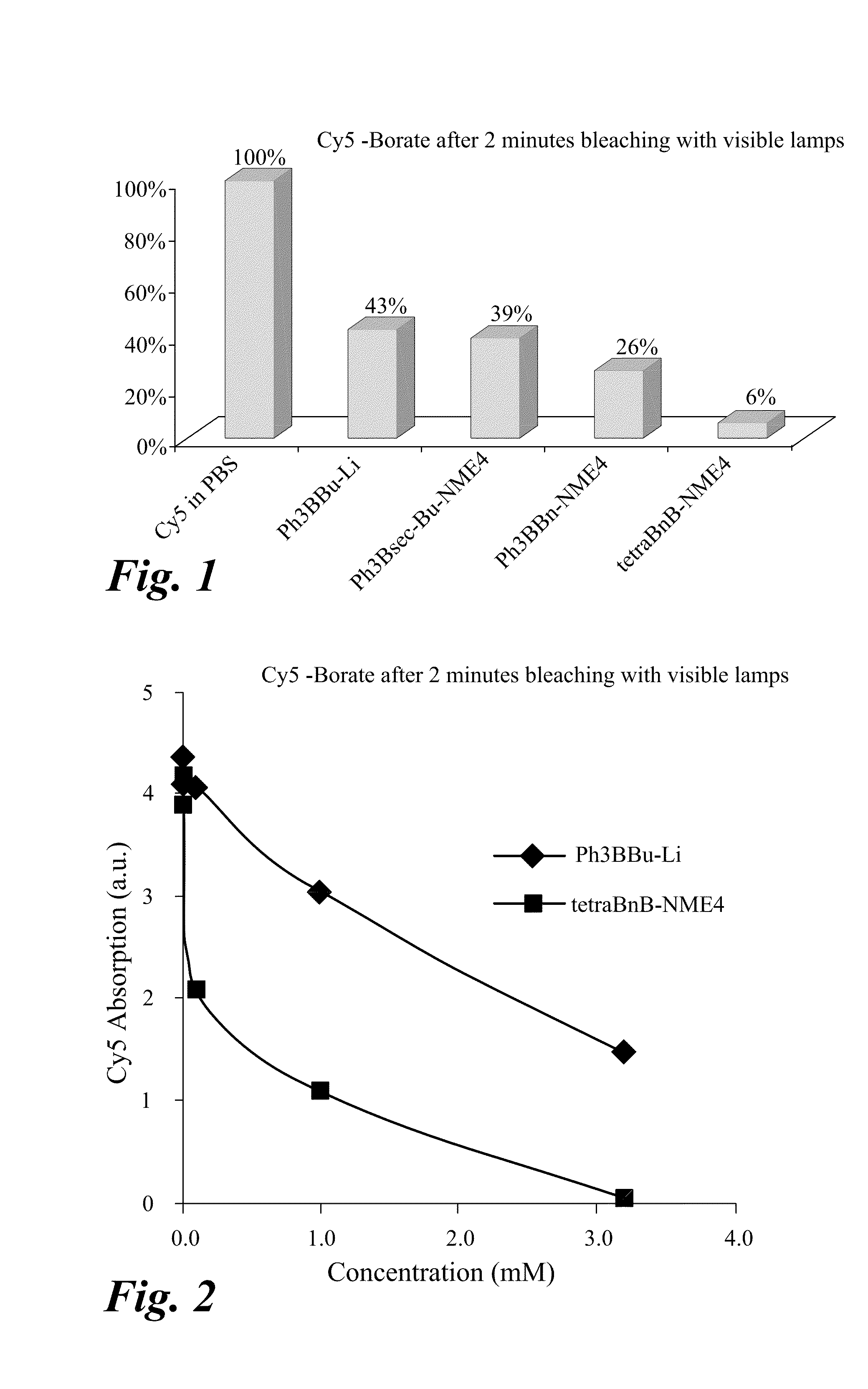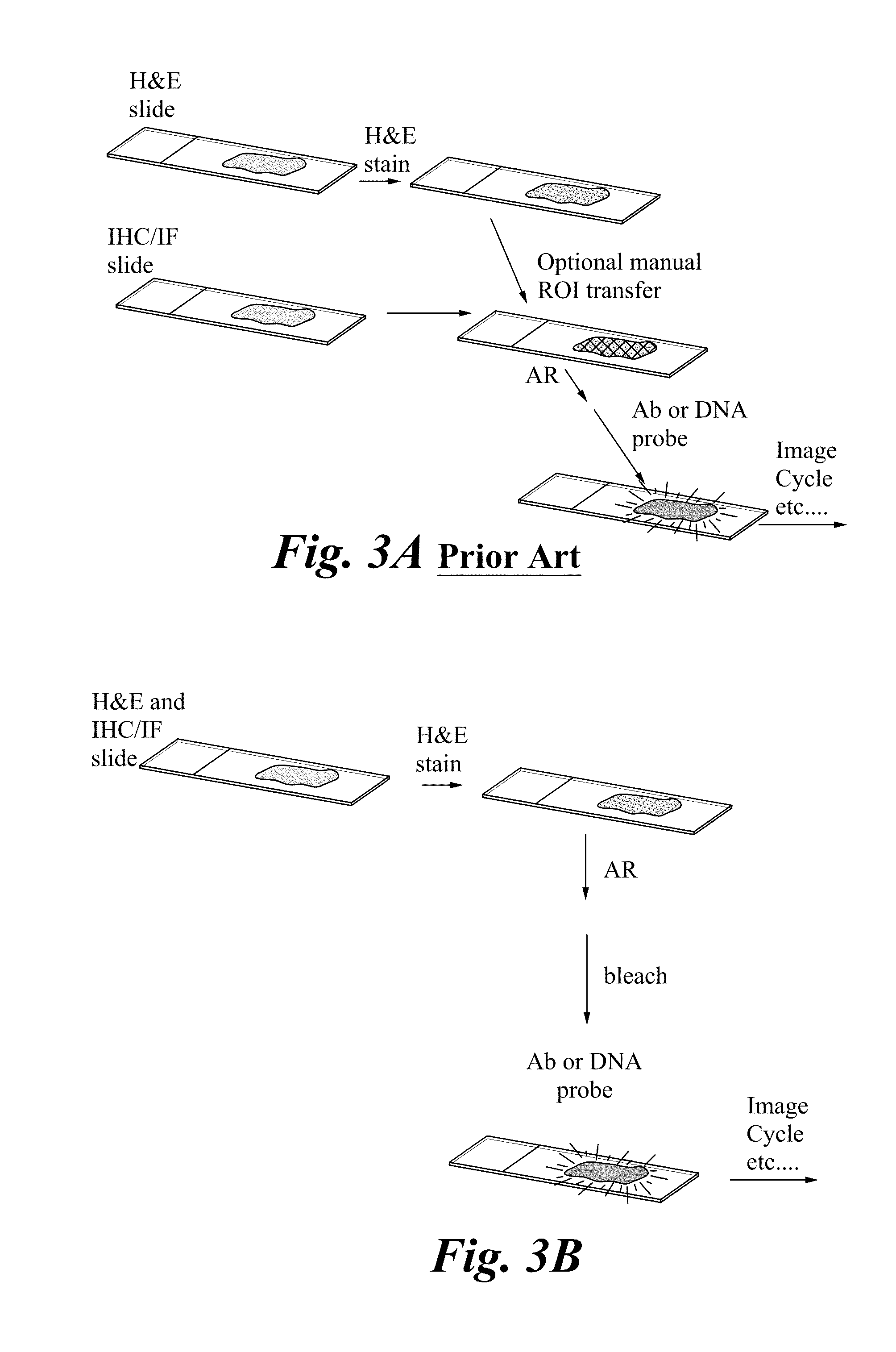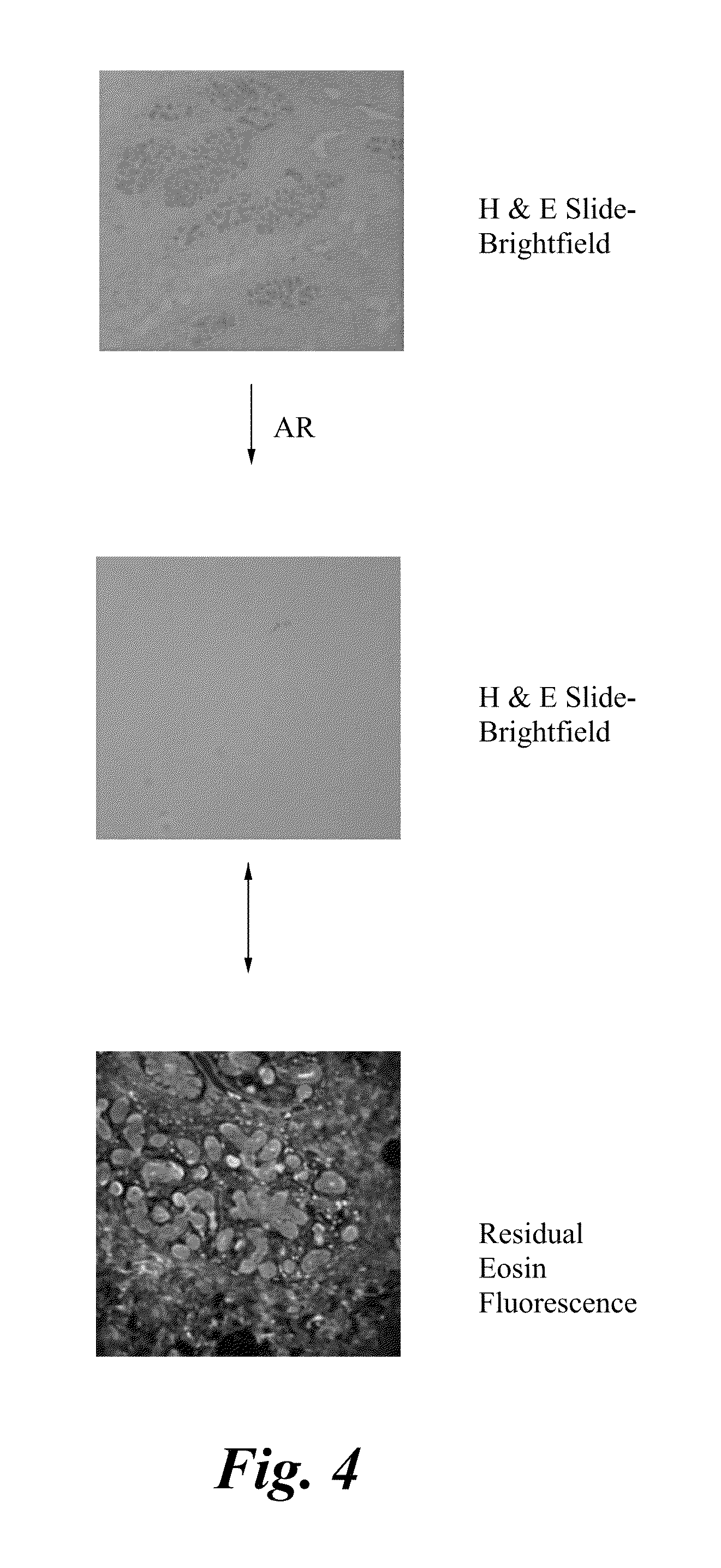Methods of analyzing an H and E stained biological sample
a biological sample and h and e technology, applied in the field of methods of analyzing an h and e stained biological sample, can solve the problems of limited sample amount, difficulty in performing various analyses required for complete characterization of disease, and limited ability to determine relative characteristics of targets
- Summary
- Abstract
- Description
- Claims
- Application Information
AI Technical Summary
Problems solved by technology
Method used
Image
Examples
example 1
Preparation of Tissue Samples
[0114]Human breast tissue array samples were obtained as tissue slides embedded in paraffin from Clarient, Huntsville, Ala. Slides were baked at 60° C. for 15 minutes and then H&E stained.
example 2
H&E Staining
[0115]All the slides were stained with hematoxylin and eosin following the standard regressive protocol listed below. After staining, images were obtained as described below in Table 1. In the procedure the slide with tissue is baked at 60° C. for 15 minutes prior to the first XYLENE step. The Hematoxylin and Eosin were filtered before each use. Coverslip was applied directly out of xylene to prevent the slide from drying before coverslipping.
[0116]
TABLE 1Standard Regressive protocol H&E StainingSolutionTimeVendorManufacture / Catalog #Xylene5minutesFisherFisher Chemical #C8H10Sci.Xylene3minutesFisherFisher Chemical #C8H10Sci.100% Alcohol1minuteVWREMD-HARLECO, 100% Alcohol blend #34172-020100% Alcohol1minuteVWREMD-HARLECO, 100% Alcohol blend #34172-02195% Alcohol1minuteVWREMD-HARLECO, Dehydration Alcohol 95%, #6534895% Alcohol1minuteVWREMD-HARLECO, Dehydration Alcohol 95%, #6534980% Alcohol1minuteVWREMD-HARLECO, Dehydration Alcohol 95%, #65350DI Water20-30secondsHEMATOXYLI...
example 3
Imaging
[0117]Brightfield and Fluorescence images were taken for all the slides using Leica brightfield microscope and Olympus microscope respectively. For fluorescence, eosin stained images were collected in Cy2 (Ex: 482 / 35, Em: 536 / 40), Cy3 (Ex: 531 / 40, Em: 593 / 40), and Cy5 (Ex: 628 / 40, Em: 692 / 40) channels.
PUM
| Property | Measurement | Unit |
|---|---|---|
| wavelength | aaaaa | aaaaa |
| temperature | aaaaa | aaaaa |
| wavelengths | aaaaa | aaaaa |
Abstract
Description
Claims
Application Information
 Login to View More
Login to View More - R&D
- Intellectual Property
- Life Sciences
- Materials
- Tech Scout
- Unparalleled Data Quality
- Higher Quality Content
- 60% Fewer Hallucinations
Browse by: Latest US Patents, China's latest patents, Technical Efficacy Thesaurus, Application Domain, Technology Topic, Popular Technical Reports.
© 2025 PatSnap. All rights reserved.Legal|Privacy policy|Modern Slavery Act Transparency Statement|Sitemap|About US| Contact US: help@patsnap.com



